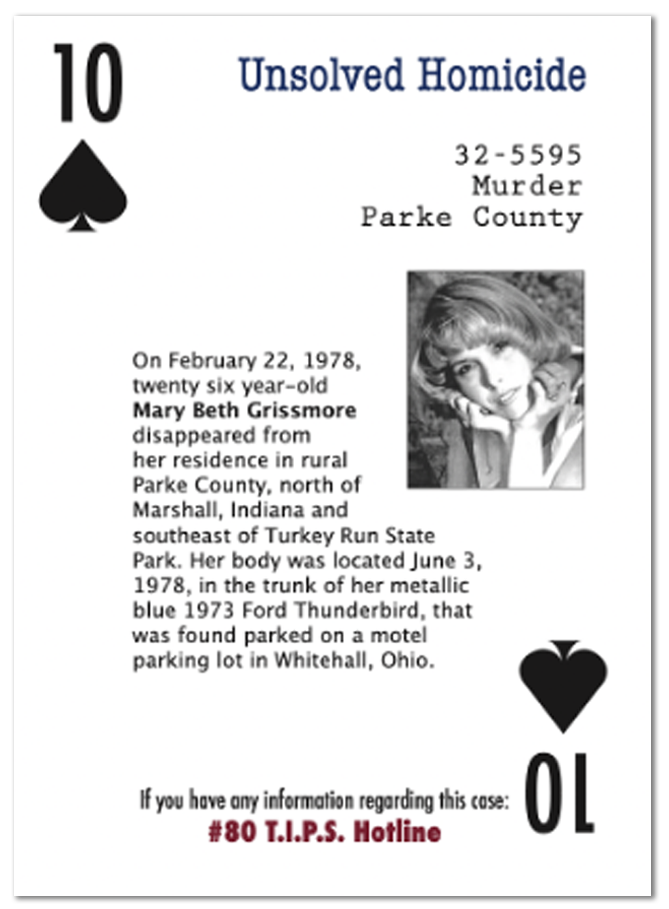In February 1978, a 26-year-old mother of two disappeared from her rural Indiana home the day she was scheduled to move to Iowa with her new husband. Months later, she was found strangled to death in the trunk of her own car in Ohio. For more than forty years, Mary Beth “Pixie” Grismore’s case has haunted law enforcement as they sift through the unanswered questions surrounding her disappearance and murder. Although the case has been ice cold for years, police are hopeful that the tip they need to bring new life to the investigation is right around the corner.
Episode Info
If you have any information on the kidnapping and murder of Mary Beth Grismore AKA “Pixie” please call the FBI at 1-800-CALL-FBI Or visit tips.FBI.gov.
Items missing from the Grismores’ car that have never been recovered:
- Yellow Iowa License Plate: 93GYD485
- Several oil paintings signed “PIXIE”
- A large regulator-type wall clock (Seth Thomas Clock) in a light oak case, penciled inside the case behind the movement are the initials BDH and the date 1975 or 1976
- A large copper laundry broiler with a blue lid
- A set of Fostoria crystal, a pattern similar to Rosepoint cups, saucers and nine inch plates (setting for twelve)
- A sterling silver flatware set with an International pattern, setting for six, minus one salad fork and an extra teaspoon
- A Noritake china set with a white and gray rose pattern with a silver border, place setting for six or seven also two platters, a round serving dish and two smaller vegetable dishes. The gray rose pattern was discontinued before Pixie’s disappearance
- A Haviland china matching coffee pot and cream and sugar server, ivory color with platinum band
- A silver chafing dish valued at approximately $100 (as of 1978)
- A music box with ceramic figures that played Lara’s Theme
- Several African carvings in wood, one human figure, six napkin rings (square with animal carvings), one “ugly” terra cotta chicken known as African primitive
- A silver sugar scoop mounted on a pedestal used as a nut server or appetizer server
- An antique barnwood plaque with the saying “Henry, how could you”
- A photograph of a large clock

Pixie poses for a glamor shot. Photo Courtesy: Family of Mary Beth "Pixie" Grismore
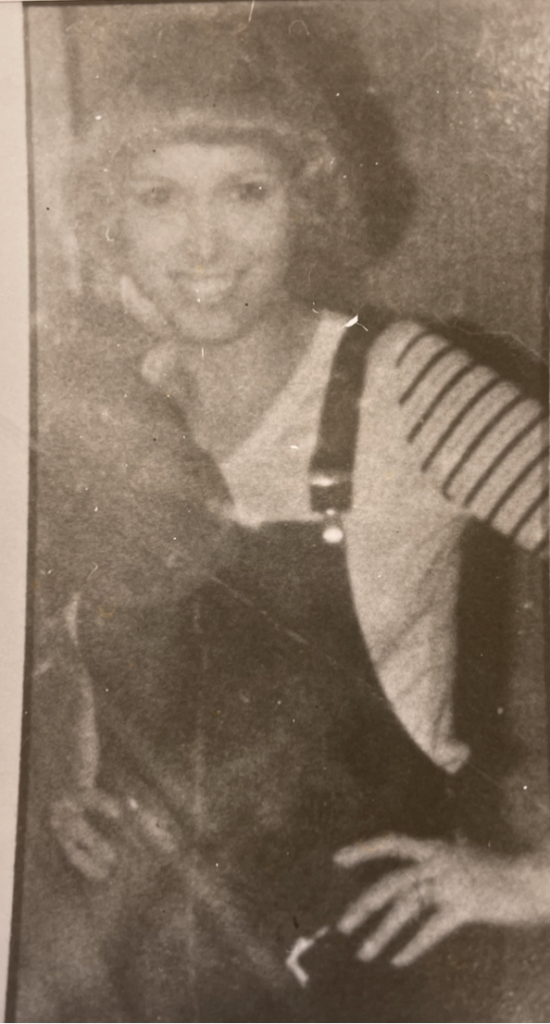
Pixie poses in an undated photo. Photo Courtesy: Whitehall Police Department
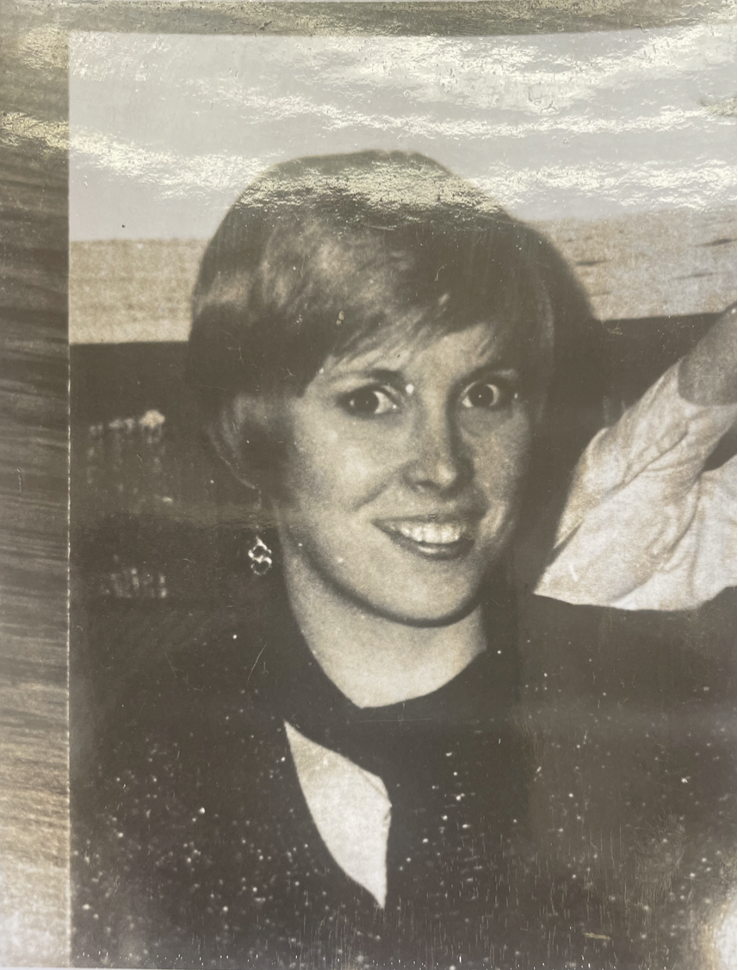
Pixie poses in an undated photo. Photo Courtesy: Whitehall Police Department
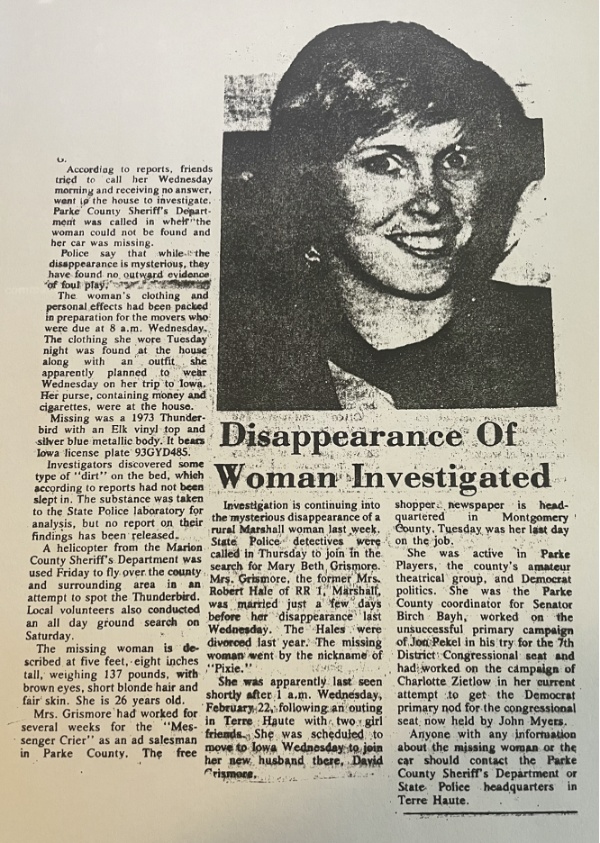
Many articles about Pixie appeared in local newspapers following her disappearance. Photo Courtesy: Whitehall Police Department

Many articles about Pixie appeared in local newspapers following her disappearance. Photo Courtesy: Whitehall Police Department
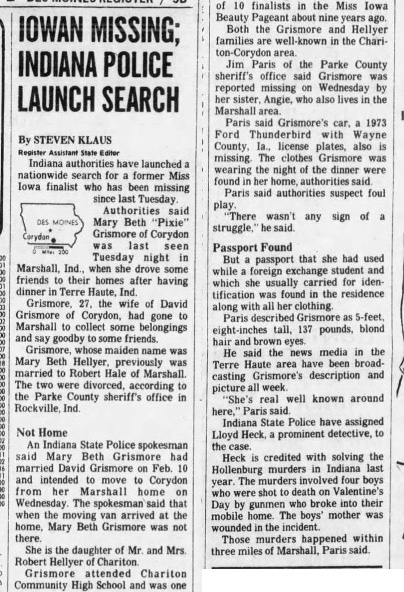
An article about Pixie’s disappearance ran in an Iowa newspaper, The Des Moines Register, on February 27, 1978. She was an Iowa native and had planned to move back to her home state to be with her new husband. Photo Courtesy: The Des Moines Register
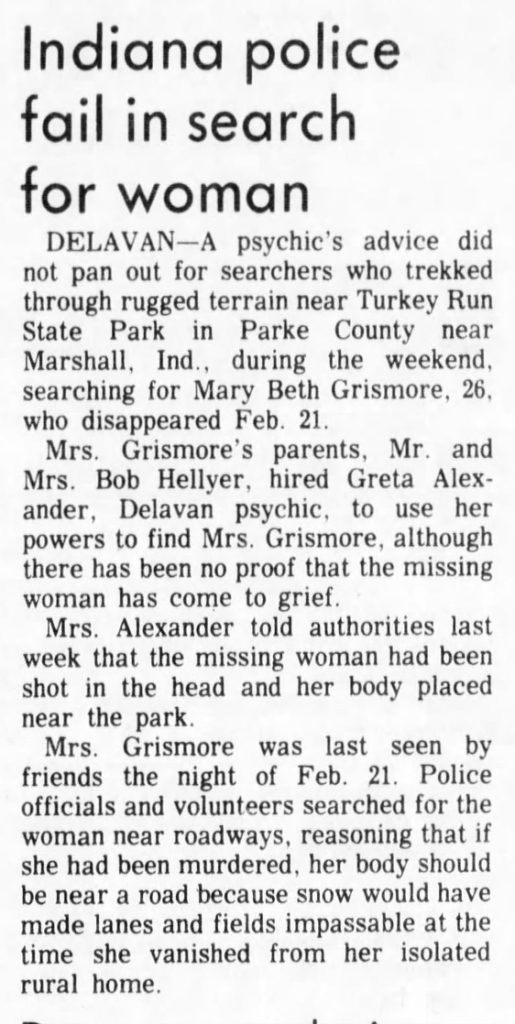
Pixie’s parents hired a psychic to help in the search for their missing daughter. According to an April 12, 1978, article from The Pantagraph in Bloomington, Illinois, the psychic led them on a search through Turkey Run State Park, which was where Pixie worked a few months prior to her disappearance. Photo Courtesy: The Pantagraph
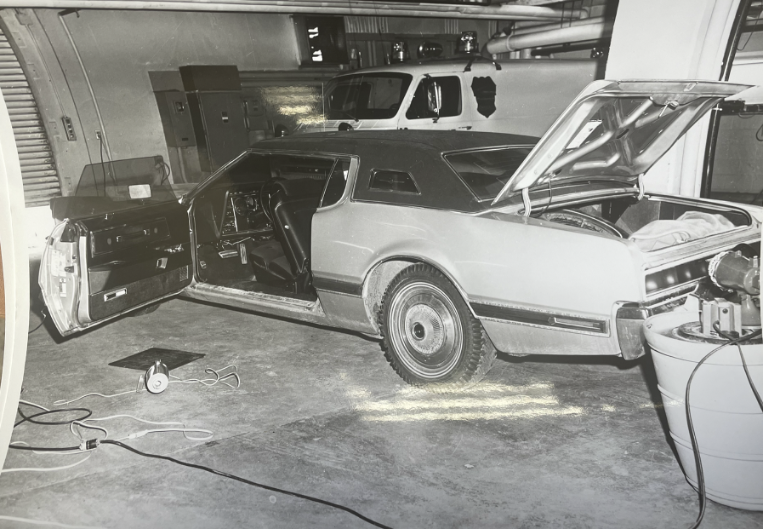
After detecting an unpleasant odor emanating from the vehicle, Whitehall police towed Pixie’s car from the Holiday Inn to their police station. They pried open the trunk and found Pixie’s body covered by blankets, towels, and a raincoat. A thorough search of the car revealed that several items had also been stolen from the car. Photo Courtesy: Whitehall Police Department

After detecting an unpleasant odor emanating from the vehicle, Whitehall police towed Pixie’s car from the Holiday Inn to their police station. They pried open the trunk and found Pixie’s body covered by blankets, towels, and a raincoat. A thorough search of the car revealed that several items had also been stolen from the car. Photo Courtesy: Whitehall Police Department
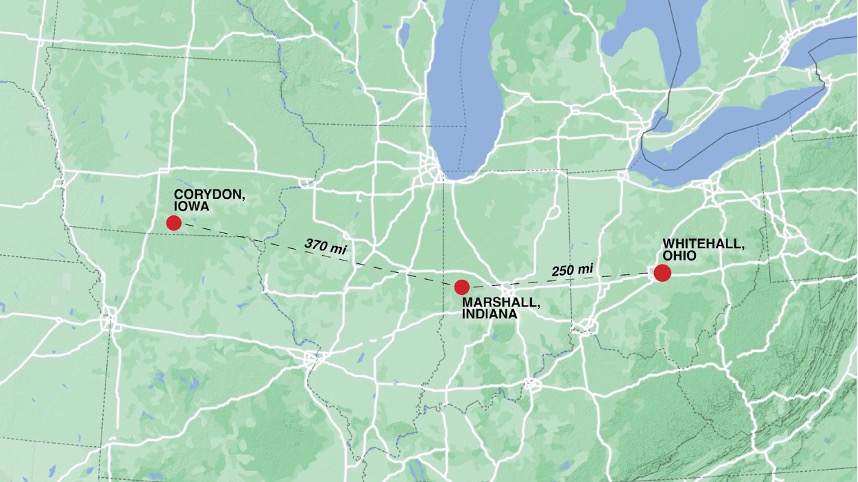
A map showing Marshall, Indiana, where Pixie disappeared from and also where Turkey Run State Park is located; Whitehall, Ohio, where Pixie’s body and her car were found; and Corydon, Iowa, where Pixie’s husband David lived. Photo Courtesy: Google Maps

According to a May 5, 1978, article from The Indianapolis Star, police were looking for a connection between Pixie’s killing and the murder of Indiana University student Ann Louise Harmeier — both victims had been strangled within a few months of each other. - Part One Photo Courtesy: The Indianapolis Star
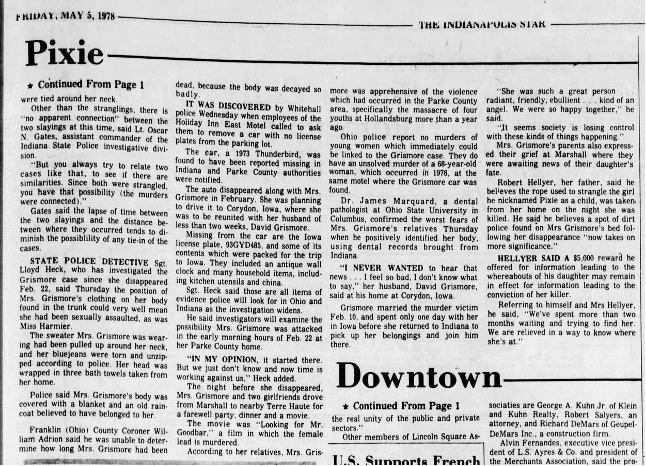
According to a May 5, 1978, article from The Indianapolis Star, police were looking for a connection between Pixie’s killing and the murder of Indiana University student Ann Louise Harmeier — both victims had been strangled within a few months of each other. - Part Two Photo Courtesy: The Indianapolis Star
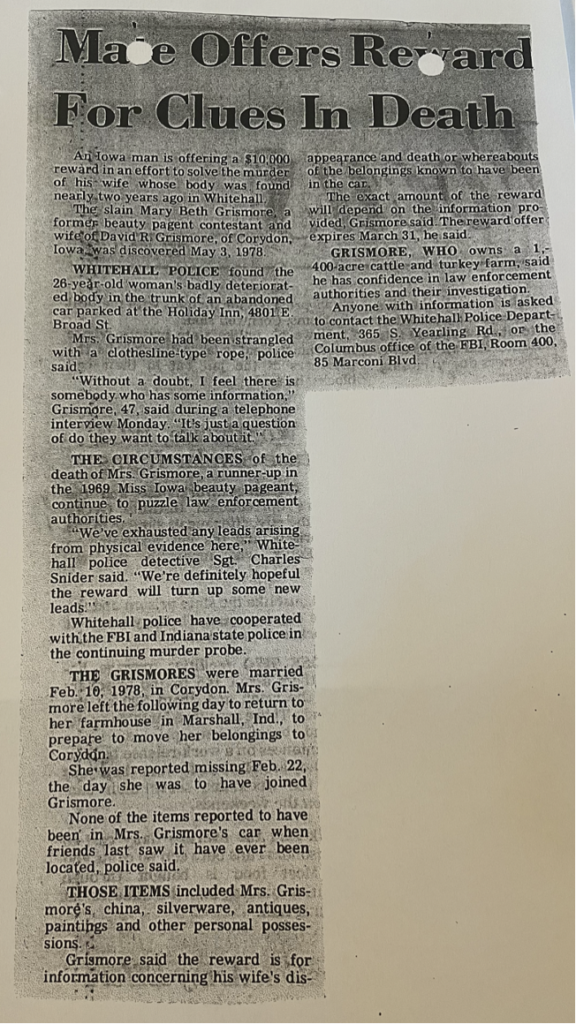
Nearly two years after Pixie’s body was found, her husband, David, offered a reward of $10,000 for information about Pixie’s death or the whereabouts of the items missing from her vehicle. Photo Courtesy: Whitehall Police Department
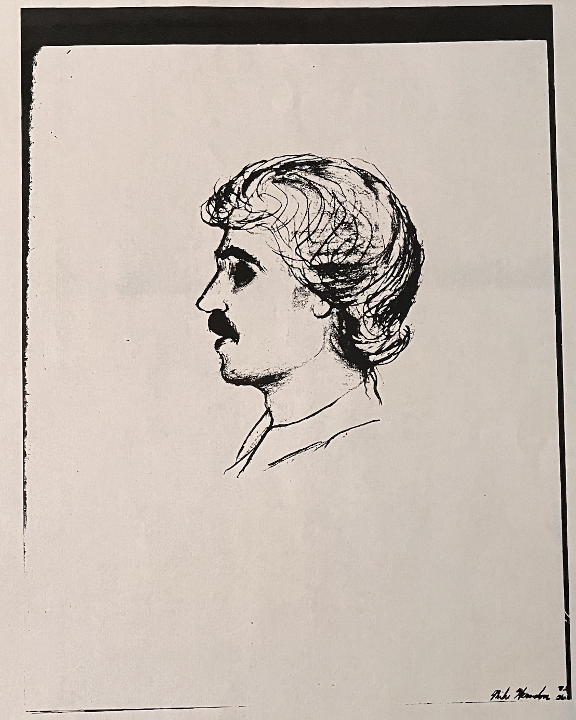
A mechanic in Rockville, Indiana, which is just outside of Marshall, came forward to police and said that he saw Pixie’s car the morning she disappeared and that a man was driving it. He couldn’t recall exactly what the man looked like, so he agreed to be hypnotized in an effort to improve his recollection of the man. The effort resulted in this composite sketch that would later come in handy for investigators. Photo Courtesy: Federal Bureau of Investigation

Pete Coakley’s booking photo, which was taken after he was arrested for the murder of Patricia Hite. Photo Courtesy: Whitehall Police Department

